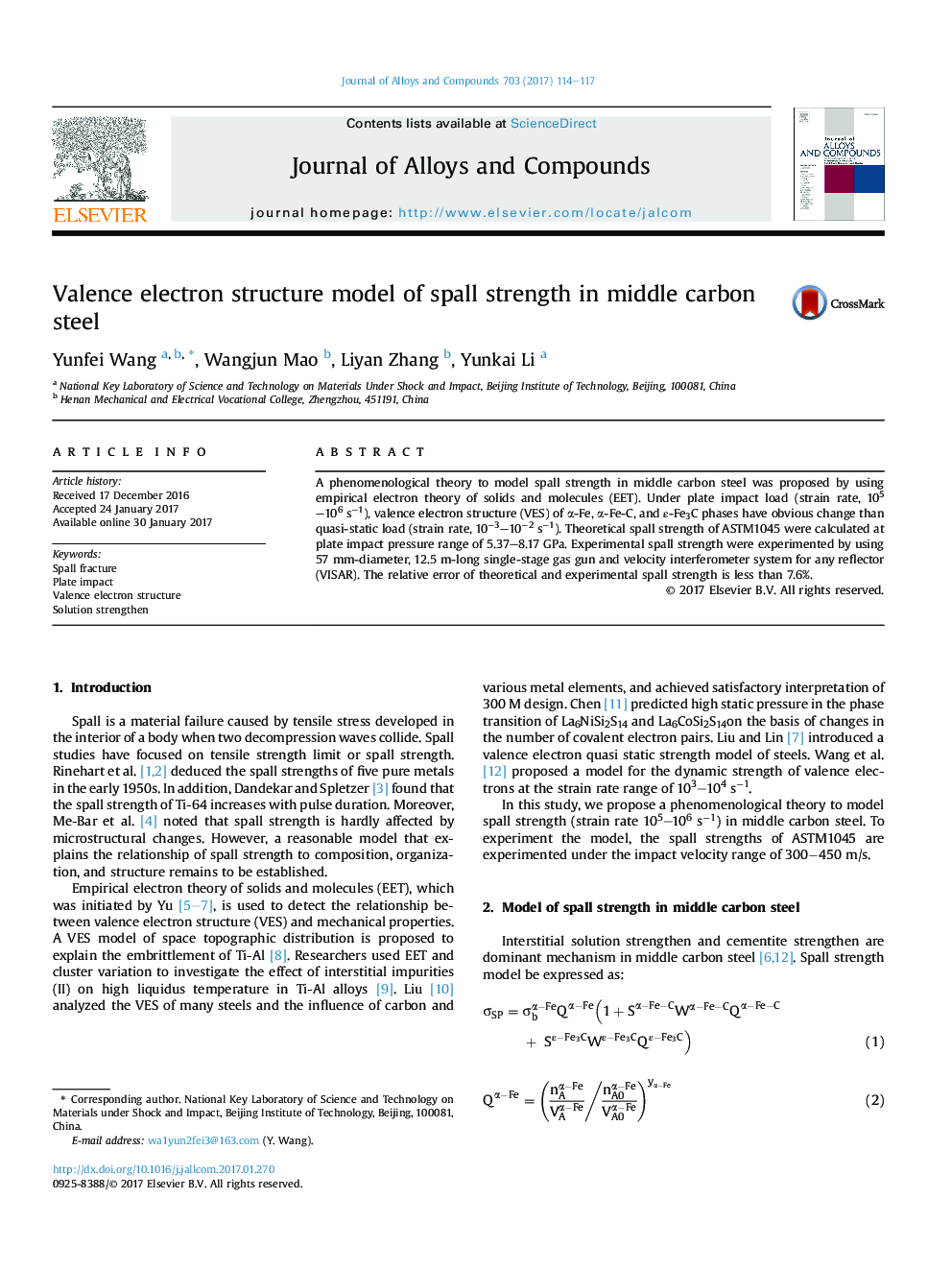| Article ID | Journal | Published Year | Pages | File Type |
|---|---|---|---|---|
| 5460281 | Journal of Alloys and Compounds | 2017 | 4 Pages |
Abstract
A phenomenological theory to model spall strength in middle carbon steel was proposed by using empirical electron theory of solids and molecules (EET). Under plate impact load (strain rate, 105-106 sâ1), valence electron structure (VES) of α-Fe, α-Fe-C, and ε-Fe3C phases have obvious change than quasi-static load (strain rate, 10â3-10â2 sâ1). Theoretical spall strength of ASTM1045 were calculated at plate impact pressure range of 5.37-8.17 GPa. Experimental spall strength were experimented by using 57 mm-diameter, 12.5 m-long single-stage gas gun and velocity interferometer system for any reflector (VISAR). The relative error of theoretical and experimental spall strength is less than 7.6%.
Related Topics
Physical Sciences and Engineering
Materials Science
Metals and Alloys
Authors
Yunfei Wang, Wangjun Mao, Liyan Zhang, Yunkai Li,
